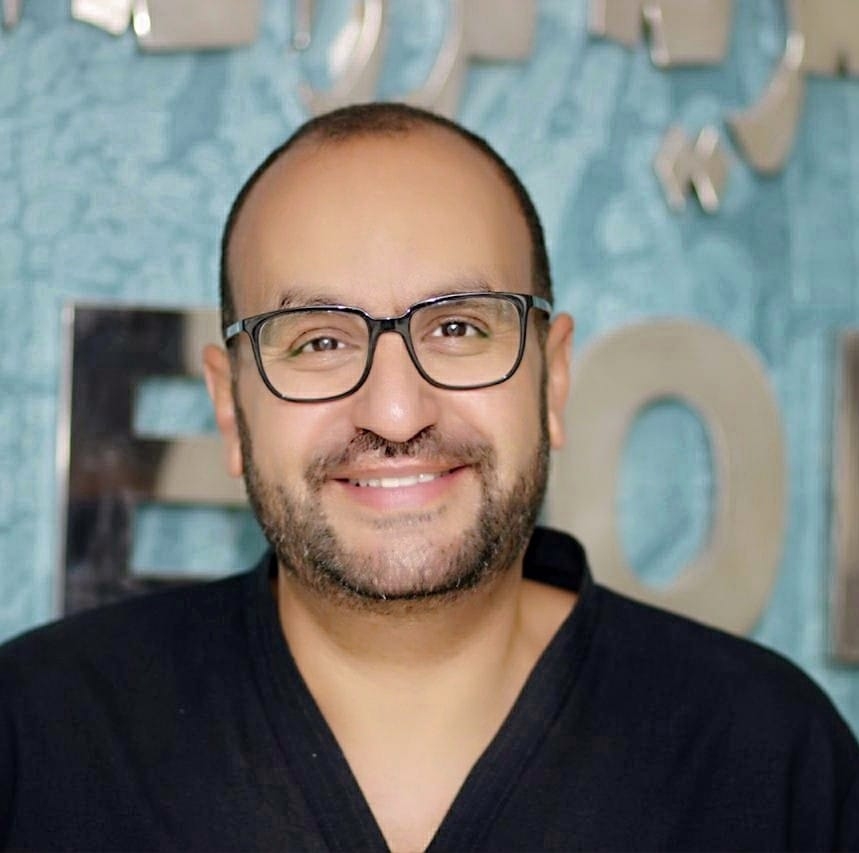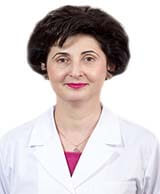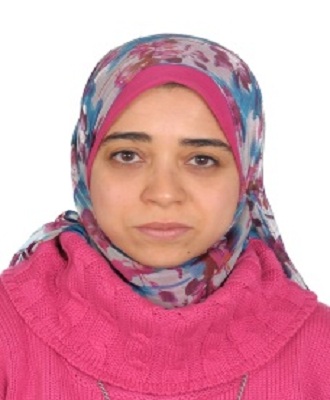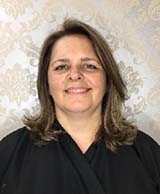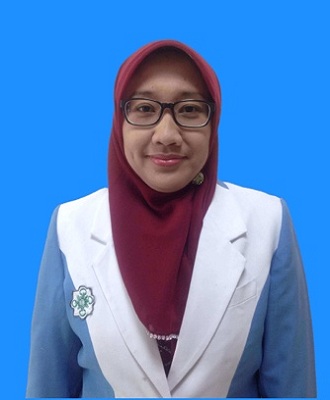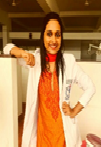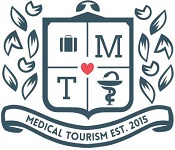Theme: Dental Health: Vibrating smiles for healthy lifestyle
World Dental Health 2021
On behalf of the European Conference on Dental Health, we are delighted to welcome you to join the Conference that is scheduled to be held as a webinar on December 01-02 ,2021 which is an exceptional gathering for the worldwide prominent scholastics in the field of Oral Care and Dental Health where Dentists, Dental Surgeons, Doctors, Directors, Scientists, Professors, Research scholars, Postdocs, Academic Staff are about to share their research work and acquiesce new emerging technological trends in the conference areas.
The European Conference on Dental Health provides a global platform for discussion, exchange of ideas that include prompt keynote presentations, Oral talks, Poster Presentations and Exhibitions, Symposiums, Workshops, plenary sessions, Young Researcher’s Forum on latest technologies in Dental Care and Oral Health with the theme “Dental Health: Vibrating smiles for healthy lifestyle”. The conference provides networking sessions by gathering Dentists, Dental Hygienists, Dental Practitioners, Oral Health Experts, Oral/ Dental Surgeons, Orthodontists, Prosthodontists, Professors, Researchers, Dental Hygienists, Dental Business Assistants, Students from Academia and other members of Dental Teams and Young researchers across the globe.
It provides a great opportunity for establishing strong relations between the dental organizations, the general public, and government so that they can work together to achieve healthier mouths and happier lives.
Scope and Importance:
Dental Health 2021 aims to discover advances in Oral Care and Dental Health and also to bring together experts from various disciplines of dental practice, education, research and management and provide an ambient platform for practitioners, dental doctors, researchers and students to sow and reap knowledge on recent and current advancements in the various fields of Dentistry. Dental Doctors and related healthcare professionals will have an ample opportunity to connect with colleagues, researchers, exhibitors and young talents and have discussions on emerging trends and challenges in real-time practice.
The Conference will strive to offer plenty of networking opportunities, providing you with the opportunity to meet and interact with the leading scientists and researchers, friends and colleagues as well as sponsors and exhibitors.
Who can attend?
Dental Health 2021 brings together individuals who have an interest in different fields of Dentistry like Principal Dentist’s, Dental Partners and Owners, Dentists, Dental House Officers, Oral/Dental Surgeons, Orthodontists, Periodontists, Dental Business/Practice Managers, Dental or Oral Hygienists & Therapists, Dental Treatment Coordinators, Dental Nurses, Dental and Oral Health Associations, Societies and Universities, Procurement and Management teams from Corporate Dental Organizations, Dental and Oral Health Researchers, Faculty and Students, Dental Wholesalers, Dealers and Distributors, Manufacturing Medical Devices Companies.
It is a forum to discover issues of mutual concern as well as exchange knowledge, share evidence, thoughts, and make solutions.
Why to attend?
- Meet your objectives from around the world addressed regarding Dental and Oral Health.
- This is every so often a single finest chance to accomplish the utmost significant gathering of members from the Research Institutions, Universities, Clinics and Hospitals.
- Distribute Data and Conduct demonstrations, meet with present potential speakers, generate a splash with additional products, and receive name recognition at this 2-day event.
- World renowned speakers, interesting techniques, latest updates in Dental and Oral Health and stimulating the field of genuine extent hallmarks of this conference
- Attending International conference is about bringing professional development and to get the current state of research and the challenges to future discovery.
- The goal of this convention is to stimulate new thoughts for remedy with a purpose to be useful throughout the spectrum of Dental Health.
Benefits of Attending our Conference:
Assurance to deliver maximum requirements in dental problems and oral health that exceeds the expectancies of our participants.
Engage with pupils throughout the world. The periods of Dental Health 2021 units a noticeably advanced, revolutionary and treasured contribution to our scientific professions in any respect who paintings in touch with Oral illnesses and dental problems on each day.
Be acquainted with the modern-day improvements and demanding situations inside your industry.
- Share with professors your study and get quick answers to your questions.
- Learn from all the world's best practitioners.
- Get publication of your abstract with DOI
- Get Accredited for your inclusion
- Archived: Ability to contact events in the recording process.
- Excellent platform for mastering new job skills
- Global exposure to your study
- Learning from the Pros
- Make new networks
- Increased participation
- Wider Scope
- More Engaging
- Position yourself as the expert
Target Audience:
Dentists | Oral Maxillofacial Surgeons | Orthodontists | Cosmetic Dentists | Pediatric Dentists | Dentofacial Orthopedics | Public Health Dentistry | Dental Professors | Dental Nurses | Dental/Oral Hygienists | Dental/Oral Therapists | Dental Radiologists | Health Care Professionals | Scientists & Researchers | Academic Professionals | Medical Students | Dental Wholesalers, Dealers & Distributors | Manufacturing Medical Devices Companies
Track 01: Dentistry and Dental Medicine
Dentistry, also known as dental medicine and oral medicine, is a branch of medicine that is concerned with the study, diagnosis, prevention, and treatment of diseases, disorders, and conditions of the oral cavity, commonly in the dentition but also the oral mucosa, and of adjacent and related structures and tissues, particularly in the maxillofacial (jaw and facial) area. Although primarily associated with teeth among the general public, the field of dentistry or dental medicine is not limited to teeth but includes other aspects of the craniofacial complex including the temporomandibular joint and other supporting, muscular, lymphatic, nervous, vascular, and anatomical structures.
​​​​​​​​​​​​​​​​​​​​​​​​​​​​​​​​​​​​​​​​​​​​​​Dental health or oral health is majorly concerned with your teeth, gums and mouth. The main goal is to prevent complications such as tooth decay (cavities) and gum disease and to maintain the overall health of your mouth. A healthy mouth that is free of infections, injuries and other problems with teeth and gums is important in maintaining overall oral health.
Track 02: Dental Education and Research
Dental education is university based with much of the formal clinical teaching in dental hospitals, often with some outreach programs to provide clinical experience in contrasting settings.
Dental schools are traditionally staffed by academic teachers, assisted by part-time staff from clinical practice. Dental researchers within these institutions play important roles in contributing to knowledge as well as teaching.
The seven domains of professional activity in the general practice of dentistry are as follows:
- Professionalism;
- Communication and interpersonal skills;
- Knowledge base, information handling and critical thinking;
- Clinical information gathering;
- Diagnosis and treatment planning;
- Establishment and maintenance of oral health;
- Health promotion.
Dental research can be defined as formalized acquisition and investigation of subject matter related to dental profession.
Track 03: Tooth Anatomy, Decay & Care
Tooth, plural teeth, is any of the hard, resistant structures occurring on the jaws and in or around the mouth and pharynx areas of vertebrates. Teeth are used for catching and masticating food, for defence, and for other specialized purposes.
Each tooth has 4 main parts, including:
- Enamel. The outer layer of the tooth and the hardest material in the body.
- Dentin. The inner layer and the main part of the tooth, and the largest dental tissue.
- Pulp. Soft tissue on the inside of the tooth that contains the nerve, blood supply, and the ability to produce dentin.
- Root. The part of the tooth that secures it into the jaw.
Tooth decay is damage that occurs to your teeth, which can potentially result in cavities, dental abscesses, or even tooth loss. It’s caused by the activity of certain species of bacteria that can live in dental plaque.
Tooth decay can be prevented by practising good oral hygiene which can be done by the following the below steps;
See your dentist regularly, brush your teeth, limit sweets etc.
Sub tracks:
- Initial demineralisation
- Enamel Decay
- Dentin Decay
- Pulp Damage
- Abscess
Track 04: Orthodontics & Dentofacial Orthopedics
Orthodontics is a specialty of dentistry that deals with the diagnosis, prevention, and correction of malpositioned teeth and jaws, and misaligned bite patterns. It can also focus on modifying facial growth, known as dentofacial orthopedics.
Orthodontic therapy includes the use of either fixed or removable appliances. The majority of orthodontic therapy is delivered using appliances that are fixed in place for example with braces that are bonded to the teeth with adhesives. Fixed appliances usually have a greater mechanical control over the teeth and the treatment outcome is greater with the use of fixed appliances than with removable appliances.
Sub tracks:
- Braces
- Head Gear
- Palatal Expansion
- Jaw Surgery
- Removable Retainers
- Fixed Retainers
While orthodontics deals with the management of tooth movement, dentofacial orthopedics involves the guidance of facial growth and facial development, which occurs for the most part during childhood, and is a reason why kids are often the best candidates for receiving dentofacial orthopedic therapy. Dentofacial orthopedics helps the patients to specifically fix problems that have developed with the bone structure of the jaw and face. They make use of appliances that can redirect the growth to make a variety of repairs including a narrow jaw and fixing the underbite and overbite.
Track 05: Endodontics
Endodontics is the branch of dentistry concerning dental pulp and tissues surrounding the roots of a tooth. “Endo” is the Greek word for “inside” and “odont” is Greek for “tooth.” Endodontic treatment, or root canal treatment, treats the soft pulp tissue inside the tooth. An endodontist is a dentist who specializes in saving teeth.
Sub:
- Root Canal Treatment
- Perirardicular Surgery
- Apicoectomy
- Pulpotomy
- Apexification
- Hemisection
- Pulpal Regeneration
Track 06: Prosthodontics
Prosthodontics is one of the branches of dentistry which deals with the replacement of missing teeth and the associated soft and hard tissues by prostheses (crowns, bridges, dentures) which may be fixed or removable, or may be supported and retained by implants.
Prosthodontics therapy usually has a predictable expected longevity directly related to quality and type of prostheses, complexity of patient need, and subsequent oral hygiene.
A Prosthodontist is a specialist dentist who deals with the replacement of missing teeth and related mouth or jaw structures by bridges, dentures or prostheses. They receive an additional three years of training after dental school to specialize in this field.
The main goal of a prosthodontist is;
- To replace the missing tooth/teeth and restore its function
- To correct facial esthetics
- To correct speech deformity
- To maintain healthy oral and facial structures
Sub:
- Fixed Prosthodontics
- Removable Prosthodontics
- Maxillofacial Prosthodontics
- Implant Prosthodontics
Track 07: Dental Implants & Dentures:
Dental implants are replacement tooth roots. Implants provide a strong foundation for fixed (permanent) or removable replacement teeth that are made to match your natural teeth.
There are many advantages to dental implants, including:
- Improved appearance
- Improved Speech
- Improved Comfort
- Improved Self-esteem
- Improved Oral Health
- Durability
- Convenience
Dentures (also known as false teeth) are prosthetic devices constructed to replace missing teeth, and are supported by the surrounding soft and hard tissues of the oral cavity. There are many denture designs, some which rely on bonding or clasping onto teeth or dental implants (fixed prosthodontics). There are two main categories of dentures, the only difference being whether they are used to replace missing teeth on the mandibular arch or on the maxillary arch.
Sub: Types of dental Implants:
- Endosteal Implant: Blade implant
Ramus Frame Implant
Root Form Implant
- Subperiosteal Implant
- Transosteal Implant
- Intramucosal Implants
Track 08: Periodontics:
Periodontology or periodontics is the specialty of dentistry that includes study of supporting structures of teeth, as well as diseases and conditions that affect them. The supporting tissues are generally known as the periodontium that includes the gingiva (gums), alveolar bone, cementum, and the periodontal ligament. A periodontist is one who is specialized in the prevention, diagnosis and treatment of periodontal disease and in the placement of dental implants. Periodontists are also experts in treating oral inflammations. As specialists in periodontal disease, they are aware of all the latest techniques for diagnosing and treating periodontal disease. They are also trained in cosmetic periodontal procedures.
Periodontists are involved with treatment of cases ranging from mild gingivitis to more severe periodontitis. Periodontists have a wide range of treatment options such as,
- Scaling and root planing ( cleaning of infected root surfaces)
- Root surface debridement (damaged tissue removal)
- Regenerative procedures (lost bone and tissue reversal)
When required, periodontists can also perform surgical procedures for patients with severe gum disease. Along with this, periodontists are also trained in the placement, maintenance and repair of dental implants.
Sub
- Non-Surgical Treatment
- Gum Graft Surgery
- Laser Treatment
- Dental Crown Lengthening
- Dental Implants
- Pocket Reduction Procedures
- Plastic Surgery Procedures
Track 09: Cosmetic Dentistry
Cosmetic dentistry is generally referred to any dental work that involves in improvement of the appearance though not necessarily the functionality, of teeth, gums and/or bite. It mainly focuses on improvement in dental aesthetics in color, position, shape, size, alignment and overall smile appearance. Many dentists consider themselves as "cosmetic dentists" regardless of their specific education, specialty, training, and experience in this field.
Cosmetic dentistry may involve:
- Dental material addition to teeth or gums – examples: bonding, porcelain veneers crowns , gum grafts
- Tooth structure or gums removal – examples: enameloplasty, gingivectomy
- Neither addition nor removing dental materials, tooth structure, or gums – examples: teeth whitening (bleaching), laser whitening, gum depigmentation
- Teeth Straightening accompanied by improvement in appearance of face– orthodontics
- Veneers, dental laminates - conservative
- Scaling
SUB:
- Whitening
- Reshaping
- Bonding
- Bridging
- Veneers
- Implants
- Gum Lifts
- Straightening
- Bite Reclamation
Track 10: Pediatric Dentistry & Gerodontology
Pediatric dentistry deals with children from birth through adolescence. Pediatric dentistry is a branch that adapts techniques and procedures from general dentistry and specialties to provide primary and comprehensive preventive and therapeutic oral health care for children.
Pediatric dentists treat a varied range of diseases in infants, children and adolescents, including those with special health care needs, and are experts in providing care to make their patients feel comfortable. Pediatric dentists also educate their patients and the parents of the patients about the importance of oral health and preventative oral health care.
Geriatric dentistry or Gerodontology is the delivery of dental care to older adults involving diagnosis, prevention, management and treatment of problems associated with age related diseases. The mouth is known as a mirror of overall health, reinforcing that oral health is an integral part of general health. In the elderly population poor oral health has been considered a risk factor for general health problems. Older adults are more susceptible to oral conditions or diseases due to an increase in chronic conditions and physical/mental disabilities. Hence, the elderly form a distinct group in terms of provision of care.
Track 11: Sports Dentistry
Dental trauma in sports is a major link between the sports and dentistry. Violence, traffic accidents, and sporting activities together have contributed to the establishment of traumatic dental injuries as a public dental health problem. Sports dentistry mainly concerns with the prevention of oral/facial athletic injuries and related oral diseases and manifestations. It has two major aspects: First is the treatment of orofacial injuries and the second is the prevention of sports-related orofacial injuries. To provide suitable care, a dentist must be knowledgeable and adept in the areas of oral surgery, endodontics, operative dentistry, orthodontics, hospital dentistry, and patient behavior management. The sports or team dentist assists and helps athletes in the prevention, treatment, and diagnosis of oral injuries.
Most of the dental traumas encountered during sports are luxation injuries to tooth, avulsion, fracture of the facial bones, and concussion injuries. Prevention of these injuries during sports is important. Dental injuries are the most common type of orofacial injury sustained during participation in sports. Most athletes are not aware of the health implications due to a traumatic injury to the mouth or of the potential for incurring severe head and orofacial injuries while playing. The dentist can play a crucial role in informing athletes, coaches and patients about the importance of preventing orofacial injuries in sports.
Preventive aspects during sports have changed the incidence of occurrence of these injuries to the athlete. The preventive measures like usage of helmets, mouth guards, and other protective gears have reduced the impact on the athlete, thereby reducing the injuries. Pediatric dentist must work in close association with the teachers, coaches/trainers, parents, and other health professional to ensure comprehensive dent-facial care.
Track 12: Laser Dentistry
The use of lasers to treat a number of different dental conditions is termed as Laser Dentistry. The Food and Drug Administration (FDA) approved the utilization of lasers for gum treatments back within the 1990s. This technology was declared suitable for use on the teeth six years later. In the years since, laser dentistry has emerged as a well-liked approach to enhancing tooth and gum health, functionality and appearance. This form of dentistry involves the use of lasers for varied dental procedures and surgeries.
Laser dentistry potentially offers a easier treatment option for variety of dental procedures involving hard or soft tissue compared to drills and other non-laser tools.
LASER stands for “light amplification by the stimulated emission of radiation.” The instrument creates light energy during a very narrow and focused beam. This laser light produces a reaction when it hits tissue, allowing it to get rid of or shape the tissue.
Dental treatments can be made more efficient, cost effective, and comfortable using laser. Laser dentistry has been approved as a treatment option for various dental conditions by the Food and Drug Administration (FDA).
Lasers utilized in practice are often classified by various methods: consistent with the lasing medium used, such as, gas laser and solid laser; consistent with tissue applicability, hard tissue and soft tissue lasers; according to the range of wavelength and of course the risk associated with laser application.
Sub:
• Carbon Dioxide Laser
• Neodymium Yttrium Aluminum Garnet Laser
• Erbium Laser
• Diode Laser
Track 13: Oral Cancer
Oral cancer, also known as mouth cancer, is cancer of the lining of the lips, mouth, or upper throat. In the mouth, it most commonly starts as a painless white patch that thickens, develops red patches, an ulcer, and continues to grow. If present on the lips, usually looks like a persistent crusting ulcer that does not heal, and slowly grows. Some other symptoms stating the presence of an oral cancer include difficult or painful swallowing, new lumps or bumps in the neck, a swelling in the mouth, or a feeling of numbness in the mouth or lips. Smoking and other tobacco use are linked to most cases of oral cancer. Alcohol abuse also increases the risk for oral cancer.
Human papillomavirus (HPV) infection (the same virus that causes genital warts) account for a larger number of oral cancers than in the past. One type of HPV, type 16 or HPV-16, is much more commonly associated with almost all oral cancers.
Oral cancer can be prevented by avoiding use of tobacco products, limiting alcohol intake, sun protection on the lower lip, HPV vaccination. The treatments used for oral cancer can include a combination of surgeries (to remove the tumor and regional lymph nodes), radiation therapy, chemotherapy, or targeted therapy. The types of treatments generally depends on the size, locations, and spread of the cancer taken into consideration with the general health of the person.
SUB:
- Squamous cell carcinoma
- Verrucous carcinoma
- Minor salivary gland carcinomas
- Lymphoma
Track 14: Oral Biology and Pathology
Oral Biology is a tremendously diverse scientific area encompassing the disciplines of molecular biology and genetics, microbiology and immunology, genomics, biochemistry, biophysics, craniofacial development, pharmacology, physiology, and cancer biology. Due to the unique combination of tissues and functions of the mouth and craniofacial complex, the field of oral biology blends fundamental scientific disciplines in unique and fascinating ways to overcome the challenges of developing new and highly effective ways to manage, cure or prevent diseases and developmental defects.
Branch of medical science primarily concerning with the cause, origin and nature of disease is termed as Pathology. It mainly involves the examination of tissues, organs, bodily fluids and autopsies in order to study and diagnose disease.
Oral pathology is a combined branch with the specialty of dentistry and discipline of pathology that deals with the nature, identification, and management of diseases affecting the oral and maxillofacial regions.” The science that understands the causes and effects of the diseases occurring in the mouth is known as Oral Pathology. General practices include clinical examinations, lab testing, and taking the whole body health and chemistry into consideration. This takes into consideration your personal health background to consider what existing medical conditions might be affecting you specifically.
Track 15: Oral and Maxillofacial Surgery
Oral and Maxillofacial Surgery is that specialty of dentistry that includes the diagnosis, surgical and adjunctive treatment of diseases, injuries and defects involving both the functional and aesthetic aspects of the hard and soft tissues of the oral and maxillofacial region. It is a surgical specialty focusing on anaplasty of the face, facial trauma surgery, the oral fissure, head and neck, mouth, and jaws, as well as facial cosmetic surgery.
An oral and maxillofacial surgeon is a regional specialist surgeon who treats the complete craniomaxillofacial complex: anatomical area of the mouth, jaws, face, and skull, head and neck as well as associated structures. As stated by the national jurisdiction, oral and maxillofacial surgery may require a degree in medicine, dentistry or both.
Numerous oral and maxillofacial surgical operations are carried out on an outpatient basis under local anaesthesia or conscious sedation. These surgeries include: pre-implant surgery placement of dental/facial implants, removal of impacted teeth, intra-oral and facial soft tissue procedures.
Other major operations, for example those for salivary gland disease, trauma, facial deformity or cancer, are carried out on an inpatient basis under general anaesthetic.
SUB:
- Tooth extractions
- Corrective jaw (Orthognathic) surgery
- Cleft lip/Palate Surgery
- Bone grafting
Track 16: Preventive Dentistry
Preventive dentistry is characterized as that department of dentistry that deals with the preservation of sound teeth and gums as well as avoidance of dental carries and oral disease. The hone of looking after your gums and teeth and keeping up great oral hygiene to keep them healthy is known as preventive dentistry. The most point is to dodge cavities, gum infections, enamel wear, tooth loss and more. With the coming of a long time of refined diet, we have ended up more helpless to verbal diseases and hence maintaining them has gotten to be greatly vital. With advancements in dentistry prevention of verbal infections has become easier. Maintenance of oral hygiene should be practiced from an early age. The daily schedules of brushing and flossing twice are the best frame of preventive dentistry. Going to a dental practitioner with 6 months follow up is another way of avoiding oral diseases.
Dental Procedures Involved In Preventive Dentistry:
Prevention of dental decay
Prevention of gum diseases
Prevention of crowding of teeth
ADVANTAGES OF PREVENTIVE DENTISTRY
- Helps in the maintenance of the health of gums and teeth.
- Prevents the occurrence of cavities.
- Prevents gum diseases
- Prevents or reduces the chances of upcoming malalignment of teeth
Track 17: Dental Surgery
Any of a number of medical procedures that involve artificially modifying dentition; in other words, surgery of the teeth, gums and jaw bones is termed as Dental Surgery.
Dental surgery is a part of dentistry, which is a branch of medicine that deals with teeth, gums, and the mouth. Dentists mainly deal with the treatment, prevention, diagnosis, and study of conditions, disorders, and diseases of the oral cavity. This covers the oral mucosa and the dentition as well as all related tissues and structures (like the jaw and facial or maxillofacial area), and therefore termed as the practitioners of dentistry
Dental surgery mainly involves the surgery of jaw bones and teeth. It covers quite a number of dental procedures or medical procedures that involve artificial modification of dentition.
Dental Surgery Procedures
- Root canal
- Wisdom tooth extraction
- Dental implants
- Reconstructive surgery
- Cosmetic surgery
Track 18: Dental Nursing and Dental Practice
A dental nurse works closely with the dentist. They provide assistance throughout a patient's visit. Assisting the dentist generally involves a wide range of procedures from preparing the various materials required and ensuring the proper instruments and equipment are available, to cleaning and sterilising the used instruments.
The practice of the dental profession collectively is termed as Dental Practice. It includes;
Operative dentistry is concerned with restoration of parts of the teeth that are defective or damaged as a result of disease, trauma, or abnormal development to a state of normal function, health, and esthetics.
Pediatric dentistry, the branch of dentistry that deals with teeth and mouth conditions of children.
Preventive dentistry, deals with maintenance of a normal masticating mechanism by fortifying the structures of the oral cavity against damage and disease.
Track 19: Dental Instruments and Devices
Tools that dental professionals use to provide dental treatment are termed as Dental Instruments. They include tools to examine, manipulate, treat, restore, and remove teeth and surrounding oral structures. These allow dental professionals to manipulate tissues for better visual access during treatment or during dental examination.
Dental mirror: The dentist or dental auxiliary uses dental mirrors to view a mirror image of the teeth in locations of the mouth where visibility is difficult or impossible. Along with this they are also used for reflecting light onto desired surfaces, and for retraction of soft tissues to improve access or vision.
Probes: Dental explorer (sickle probe), Periodontal probe
Retractors: Cheek retractor, Dental mirror, Lip retractor, Mouth prop, Tongue retractor
Syringes: Dental anesthesia and dental syringe
Dental Hand pieces: Dental Hand drills
Burnishers: Ball burnisher, Beavertail burnisher, Cone burnisher, Flat plastic, Pear shaped burnisher
Track 20: Digital Dentistry, Robotics and Nanodentistry
Digital dentistry refers to the utilization of dental technologies or devices that comes with digital or computer-controlled components to hold out dental procedures instead of using mechanical or electrical tools. The use of digital dentistry can make completing dental procedures more efficient than using mechanical tools, both for restorative as diagnostic purposes. Used as the simplest way to facilitate dental treatments and propose new ways to satisfy rising patient demands.
Sub:
• Electric and surgical/implant handpieces
• Computer-aided implant dentistry
• Photography (extraoral and intraoral)
• Diagnodent
• Dental lasers
• Dental Loupes
• Virtual and Augmented Reality
Track 21: Dental Biomaterials
Dental biomaterials include the natural tissues and biocompatible synthetic materials that are useful in restoring decayed, damaged or fractured teeth. Enamel, dentin, cementum, bone, and other intraoral tissues come under natural biomaterials, whereas metals, ceramics, polymers and composite structures come under biocompatible synthetic dental materials.
Fillings, crowns, and other tooth restorations are often made up of a spread of various materials, including amalgam, resin, and ceramic. Each material has some unique benefits and downsides, and is suited to different uses and situations.
Subs:
- Bioactive glass
- Hydroxyapatite
- Nanoparticles
- Zirconia
- Antibacterial Polymers
Track 22: Dentistry in Stem Cell Regeneration and Repair
Stem cells are undifferentiated cells elucidated by two distinct characteristics, namely, their ability to continuously self-renew and to differentiate into multiple mature cell types. Stem cells are significant because one somatic cell has the potential to function as an inexhaustible proliferative source for replacement therapy, comprising one component of the tissue engineering triad. Stem cells are often categorized as embryogenic stem cells (ESCs) or adult stem cells consistent with the stage at which they're isolated.
Various types of tooth derived stem cells have been utilized in the field of regeneration medicine. Tooth derived stem cells or dental stem cells are categorized consistent with the situation from which they're isolated and represent a promising source of cells for regenerative medicine. Originally, as one kind of mesenchymal stem cells, they're considered an alternate of bone marrow stromal cells. They share many commonalties but maintain differences. Considering their original function in development and therefore the homeostasis of tooth structures, many applications of those cells in dentistry have aimed toward tooth structure regeneration.
The availability from discarded or removed teeth are often an innate benefit as a source of autologous cells. Their origin from the neural crest leads to exploitation of neurological and various other applications.\
SUB:
Dental Pulp Stem Cells (DPSCs)
Stem Cells from Human Exfoliated Deciduous Teeth (SHEDs)
Periodontal Ligament Stem Cells (PDLSCs)
Stem Cells from Apical Papilla (SCAPs)
Dental Follicle Progenitor Cells (DFPCs)
Track 23: Impact of COVID-19 on Dental & Oral health
Populations disproportionately plagued by coronavirus disease 2019 (COVID-19) also are at higher risk for oral diseases and experience oral health and oral health care disparities at higher rates. COVID-19 has led to closure and reduced hours of dental practices apart from emergency and urgent services, limiting routine care and prevention. Dental care includes aerosol-generating procedures which will increase viral transmission. The pandemic offers a chance for the dental profession to shift more toward nonaerosolizing, prevention-centric approaches to worry and faraway from surgical interventions. Regulatory barrier changes to oral health care access during the pandemic could have a favorable impact if sustained into the future.
Direct effects of COVID-19 on oral health include ageusia (an official symptom of COVID-19). The ageusia related to COVID-19 is transient and reports of other oral manifestations are based on low-grade and disputed evidence. The direct effects of COVID-19 are likely to be of modest consequence for population oral health.
The indirect effects are more complex and extensive.
The dental profession has re-organised service provision during lockdown. ‘Teledentistry’ has been widely used to assess and triage patients for urgent dental care, provide advice and monitor patients remotely. Fear of infection and limited appointment availability have promoted this technology to clinicians and patients, moving it a step closer to fulfilling its potential to improve the early detection of oral lesions, reduce costs, the need for specialist referral, waiting times and improve access for those with geographic, economic or cultural barriers to care. The ability to triage patient symptoms may also help to limit the provision of unnecessary care. The pandemic also offers an opportunity to revolutionise dental care by breaking the ‘restorative cycle’ of restoration and repair and shifting public investment towards personalised disease prevention.
Reduced service availability may have negatively impacted on both the acceptability of the service (patients waiting with pain and infection) and long-term oral health of affected patients (the inability to provide continuous care). Greater polarisation of behaviours and the lower accessibility and affordability of care pose the risk of greater oral health inequalities.
Dental diseases is creating a major health burden for many countries and affecting the people throughout their lifetime by causing pain, discomfort, disfigurement and even death. It is estimated that dental diseases affected nearly 3.5 billion people and More than 530 million children suffer from tooth decay of primary teeth. Around the world nearly 30% of the people aged between 65 and 75 who lose their natural teeth so this year, we want to inspire change by focusing on the importance of dental health for overall health, because good dental health can help you live a longer, healthier life. The Global Burden of Disease Study 2017 estimated that oral diseases affect close to 3.5 billion people worldwide
In Dental field, Digital innovations are rapidly transforming the healthcare industry and the global dental market is expected witness major positive impact from these technological breakthroughs in the coming years. Using the latest technologies other innovations are all set to trigger the growth of the dental market size. The Global Dental care and Implant Market was valued at $2728.2 Million in the year 2019 and there will be rapid growth in upcoming years in the field of Dental and Oral Care Market which is worth of $53.3 billion by 2025
Advantages of Participating at our Webinar
- The advantages of the Speaker and abstract pages are created in Google on your profile under your name would get worldwide visibility.
- Our comprehensive online advertising attracts 30000+ users and 50000+ views to our Library of Abstracts, which takes researchers and speakers to our conference.
- Meet with hundreds of like-minded experts who are pioneers in Dental Health and share ideas.
- All participants in the conference would have a different reason to participate with eminent speakers and renowned keynote speakers in one-to-one meetings.
- A rare opportunity to listen what the world's experts are learning about from the world's most influential researchers in the area of Dental and Oral Health at our Keynote sessions.
- Dental Health intensive Conference schedule, you will acquire experience and expertise in strategic gift preparation that is worth its weight golf, forming an impressive array of recognised professionals.
- Best Poster Award nominations.
- Award for Outstanding Young Researcher.
- Group Registration Advantages.
Benefits of Participation for Speaker
- Worldwide appreciation of the profile of Researchers.
- Obtain credits for professional growth.
- Explore the latest of cutting edge analysis.
- Make long-term bonds at social and networking activities.
- An ability to advertise one page in the distribution of abstract books and flyers that ultimately gets 1 million views and adds great value to your research profile.
- Learn a transition beyond your area of interest to learn more about new subjects and studies away from your core subject of Dental Health.
- We have distinctive networking, learning and enjoyable integration into a single package.
Benefits of Participation for Delegate
- Professional Development-Improve understanding and knowledge.
- Attendance at conference supports rejuvenates and energises delegates.
- Your involvement in our webinar will help with a new methodology and ideology that can be used to broaden the outcomes of businesses or industries.
- Opportunities for Dental Health Summit researchers and experts in the same field to meet and exchange new ideas through a congress.
Benefit of Participation for Sponsor
- Exposure to the international Dental Health Summit would increase the possibility of new companies.
- Opportunity to demonstrate your company's latest technologies, new products, or service your business to a wide range of international participants.
- Increase business by our webinar participants through lead generation.
- It takes a lot of time, effort and drive to create a successful company, so it's always nice to have a network of colleagues and associates to draw energy from individuals who share a common drive and objective.
- Conference on Dental Health in provide opportunities for more attention and contemplation that could help you move your company to the next stage.
- Benchmarking main organization plans and moving it forward.
- Get feedback from trustworthy people at our conference to your company questions and challenges.
- On our webinar banner, website and other proceedings, branding and marketing content, the advertising logo of your company.
Benefit of Association for Collaborators
- Nobody has these massive visitors to Oral Care and Dental Health in the world; this is the best forum to highlight society.
- Creating long-lasting peer relationships.
- In our conference banner, website and other proceedings, branding and marketing material, promotional content and your Organization logo will increase your number of subscribers/members by 40%.
- The exposure of our event to your Company listing in the Global Business forum will have a great effect on your association.
- Your representatives can network to update their knowledge and understanding of your organisation and services with key webinar delegates.
- Dentistry advertising materials such as posters, brochures, pamphlets, services that will be circulated to hospitals, universities, society and researchers will be integrated with information.
Conference Highlights
- Dentistry and Dental Medicine
- Dental Education and Research
- Tooth Anatomy, Decay & Care
- Orthodontics & Dentofacial Orthopedics
- Endodontics
- Prosthodontics
- Dental Implants & Dentures
- Periodontics
- Cosmetic Dentistry
- Pediatric Dentistry & Gerodontology
- Sports Dentistry
- Laser Dentistry
- Oral Cancer
- Oral Biology and Pathology
- Oral and Maxillofacial Surgery
- Preventive Dentistry
- Dental Surgery
- Dental Nursing and Dental Practice
- Dental Instruments and Devices
- Digital Dentistry, Robotics and Nanodentistry
- Dental Biomaterials
- Dentistry in Stem Cell Regeneration and Repair
- Impact of COVID-19 on Dental & Oral health
To share your views and research, please click here to register for the Conference.
To Collaborate Scientific Professionals around the World
| Conference Date | December 01-02, 2021 | ||
| Sponsors & Exhibitors |
|
||
| Speaker Opportunity Closed | |||
| Poster Opportunity Closed | Click Here to View | ||
Useful Links
Special Issues
All accepted abstracts will be published in respective Our International Journals.
Abstracts will be provided with Digital Object Identifier by




